Krav Maga vs MMA: Decoding the Battle (2024)
Thanks for checking out this unbiased article on Krav Maga vs MMA. Whether you’re contemplating starting one of these practices or simply want to expand your martial arts knowledge, you’ve landed in the right place.
Krav Maga, born from the military techniques of the Israeli Defense Forces, is designed for real-world self-defense and survival.
On the other hand, Mixed Martial Arts (MMA) combines various combat sports and traditional martial arts, from Brazilian Jiu-Jitsu to Boxing, focusing on technique and competition.
While both martial arts forms are effective and respected worldwide, they cater to different preferences and goals. Krav Maga is steeped in practicality and instinct, aimed at neutralizing threats quickly and efficiently.
MMA, however, is sport-oriented, promoting physical fitness, discipline, and continuous improvement through controlled environment fights.
Choosing between Krav Maga and MMA depends on what you aim to achieve: self-defense or sporting excellence.
This comparison will delve into their origins, techniques, benefits, community, and much more, helping you make an informed decision tailored to your personal or professional needs.

Krav Maga vs MMA: Who Wins?
Fundamental Principles Compared
Philosophy and Purpose: Why They Exist
Krav Maga’s philosophy is rooted in maximum efficiency and real-world application. It’s designed to prepare individuals for various types of assaults by enabling them to react swiftly and effectively, irrespective of the attacker’s moves.
Its purpose is clear – ensure survival and safety through awareness, prevention, and decisive response. Krav Maga is not just a set of techniques; it’s a way of thinking, geared towards enhancing mental toughness and the instinct to act under pressure.
MMA’s philosophy, contrastingly, revolves around the synthesis of effective techniques from multiple martial arts, to be used in a regulated sporting context.
The purpose of MMA is to identify the most effective combat strategies by testing them against equally skilled and trained opponents under safe and fair conditions.
It focuses on skill, endurance, and tactical intelligence, promoting an all-rounded athletic education and sportsmanship.
Core Techniques: The Building Blocks
Krav Maga’s core techniques involve striking, grappling, and wrestling, but unlike MMA, these moves are adapted for quick neutralization of threats. It emphasizes on strikes to vulnerable points, defensive maneuvers against weapons, and using the environment to one’s advantage.
Techniques are simple yet brutal, and efficiency in execution is key—there’s no room for elaborate set-ups seen in sport martial arts.
MMA combines techniques from Brazilian Jiu-Jitsu, Muay Thai, Wrestling, Judo, and Boxing.
This blend allows practitioners to fight effectively in various ranges and planes: standing up through kicks and punches; clinch fighting with knees and elbows; and ground fighting using submission holds. This diverse skill set makes MMA practitioners versatile and adaptable.
Training Environments: From the Gym to the Streets
Krav Maga training is often conducted in simulated environments that mirror real-life situations. This might include loud distractions, varied lighting, or uneven terrain to prepare students for unpredictability in real threats.
The training is intense and scenario-based, focusing on neutralizing threats swiftly and by any means necessary.
MMA training occurs in a more controlled environment such as gyms equipped with mats, cages, and standard rings. The aim is to simulate a fair fight scenario where techniques can be applied without real-world consequences.
Safety gear is used, and rules are followed to minimize injuries and encourage a technical growth path. MMA fighters spend a lot of time drilling techniques, sparring, and practicing form to perfect their art form under competitive conditions.
This comparison of fundamental principles between Krav Maga and MMA highlights their tailored approaches to combat training, reflecting their distinct philosophies and intended outcomes.
Each form provides its practitioners with unique skills that are effective in their respective arenas, whether it be the streets or the ring.
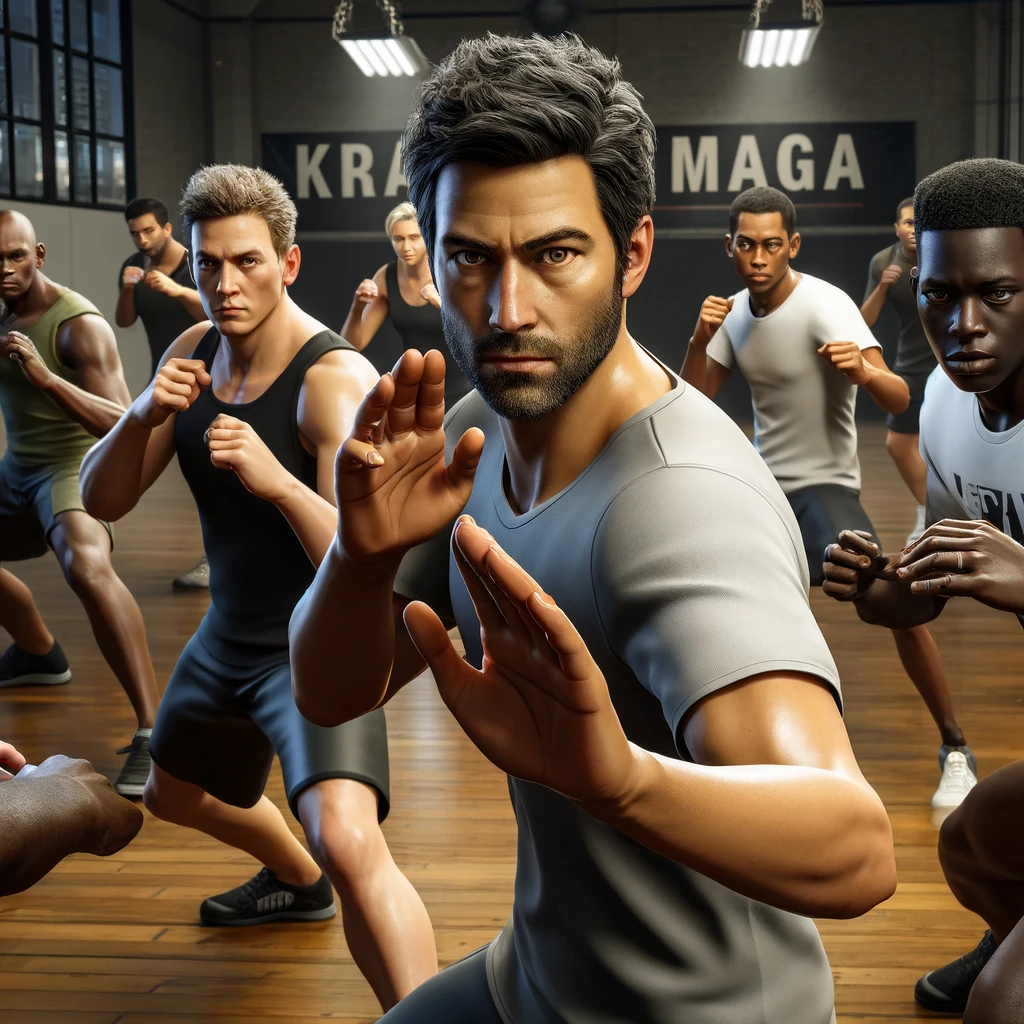
Technique Breakdown
Krav Maga Techniques: Real-World Scenarios
Krav Maga emphasizes aggressive techniques that can be learned quickly and applied under stressful conditions. The techniques are designed to be effective regardless of the practitioner’s size or strength, which makes them ideal for self-defense.
- Striking Techniques: These include punches, elbows, knees, and kicks, aimed at vital parts of the attacker’s body such as the groin, throat, or eyes.
- Defensive Techniques: These cover blocks and dodges, as well as defenses against grabs, chokes, and armed threats.
- Weapon Use: Practitioners are taught to use everyday objects as weapons (like pens or keys) and to disarm attackers wielding knives or guns.
MMA Techniques: A Melting Pot of Martial Arts
Mixed martial arts (MMA) integrates techniques from various martial arts, creating a comprehensive combat system that is effective in both competitive fights and self-defense, though with a greater focus on the former.
- Stand-up Fighting Techniques: Utilizing boxing punches, Muay Thai kicks, knees, and elbows to control the opponent while standing.
- Clinch Fighting Techniques: Techniques such as Judo throws and Greco-Roman wrestling are used to control an opponent when both fighters are grappling in close quarters.
- Ground Fighting Techniques: Brazilian Jiu-Jitsu and submission wrestling are employed to gain control on the ground, using positions like guard, mount, and side control to apply joint locks and chokes.
Fitness and Conditioning
Physical Benefits of Krav Maga
Krav Maga not only enhances physical fitness but also improves mental resilience. It boosts cardiovascular health, muscle strength, and endurance, all while enhancing reflexes and agility which are crucial for self-defense.
- Stress and Fear Management: Regular training helps in managing stress and fear, as practitioners are put through high-intensity scenarios that simulate real attacks.
- Agility and Reflexes: Drills are designed to improve quick thinking and reflex responses, crucial for the unpredictability of real-world violence.
Physical Benefits of MMA
MMA fighters are some of the fittest athletes. The sport demands excellent physical conditioning and offers a full-body workout that improves overall fitness, flexibility, and strength.
- Cardiovascular Strength: Intensive training including sparring and grappling improves heart health and endurance.
- Muscle Development: Regular practice enhances muscle tone and strength due to the diverse range of techniques practiced.
Cross-training Potential
Both Krav Maga and MMA benefit from cross-training in various martial arts disciplines to improve proficiency and adaptability in their respective focuses.
- Cross-training in Krav Maga: Practitioners often train in boxing and judo to enhance their striking and grappling skills, respectively, which are essential in close-combat scenarios.
- Cross-training in MMA: MMA fighters frequently train in Brazilian Jiu-Jitsu, wrestling, and Muay Thai to cover all aspects of fighting, from stand-up to ground control and submission.
The detailed analysis of techniques in both Krav Maga and MMA shows how each has adapted diverse fighting styles to suit specific purposes—self-defense versus competitive fighting.
Understanding these techniques offers insights into their effectiveness in different scenarios, providing practitioners and enthusiasts with the knowledge to choose the right martial art form to meet their needs.
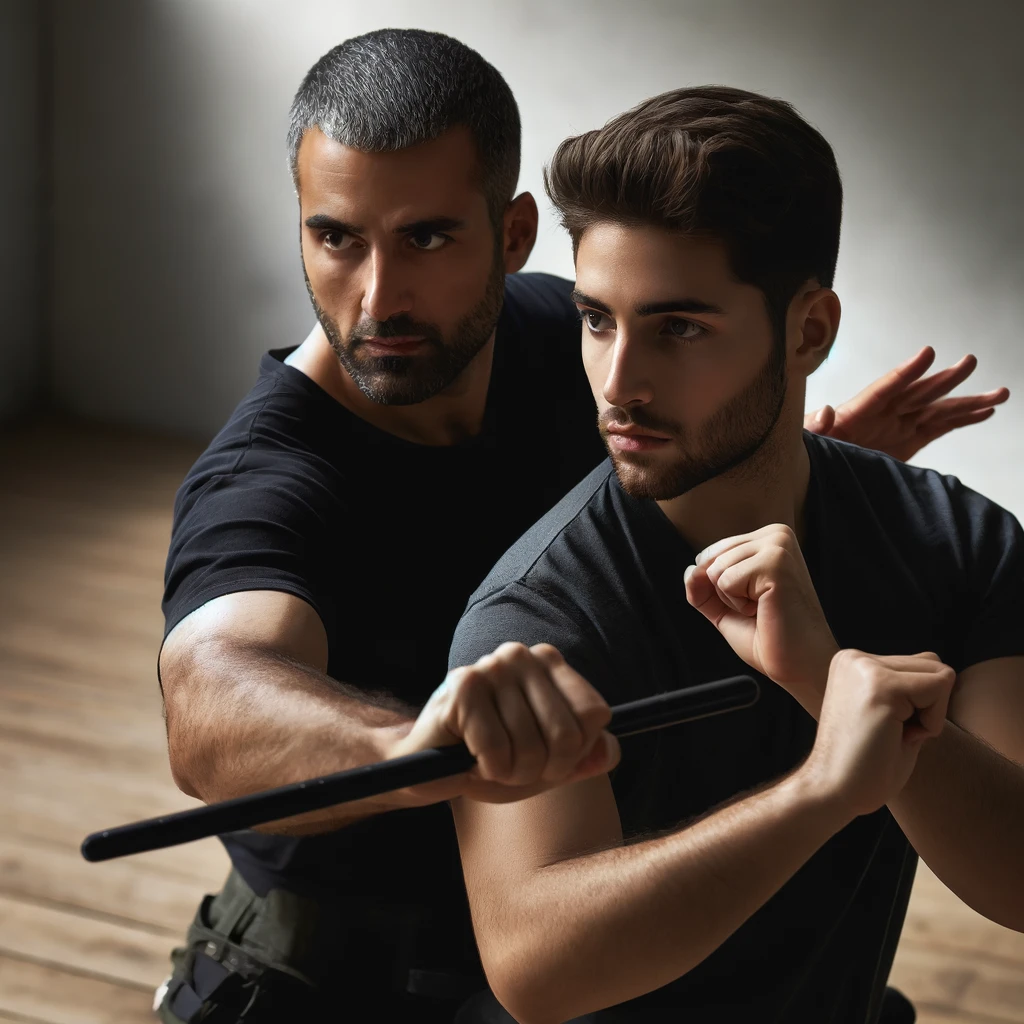
Self-Defense Versus Sport
Scenario-Based Training in Krav Maga
Krav Maga is renowned for its focus on real-world scenarios and practical self-defense. Training sessions are rigorous, mimicking real-life threats which help prepare students for unpredictable situations.
- Realistic Attacks: Trainees face scenarios that could occur in their daily lives, from muggings to armed assaults.
- High-Stress Conditioning: Exercises are designed to function under high stress, a common factor in actual confrontations, ensuring techniques become reflexive.
- Environment Usage: Students learn to utilize their environment (using walls, chairs, etc.) to their advantage, which is vital in real-world altercations.
The Competitive Nature of MMA
Contrary to Krav Maga, MMA is primarily sport-oriented, with techniques refined for effectiveness in a competitive setting rather than street applicability.
- Regulated Environment: Fights are conducted in controlled environments like cages or rings with rules to ensure fairness and safety.
- Skill Enhancement: The sport aspect emphasizes improving one’s fighting skills systematically, with clear progress benchmarks which are showcased in competitions.
- Athleticism Focus: Physical conditioning, strategy, and skill execution are honed to peak levels, reflecting the high athletic demands of the sport.
Legal and Ethical Considerations
The legality and moral implications of using martial arts techniques vary significantly between Krav Maga and MMA.
- Use of Force in Krav Maga: Given its self-defense nature, Krav Maga teaches to neutralize threats swiftly which can sometimes involve severe measures, potentially leading to legal repercussions if used outside imminent threat scenarios.
- Sporting Conduct in MMA: MMA fighters are bound by sport regulations which sanction certain actions in the ring that are illegal on the street (e.g., elbow strikes, submissions), focusing on sportsmanship and fair play.
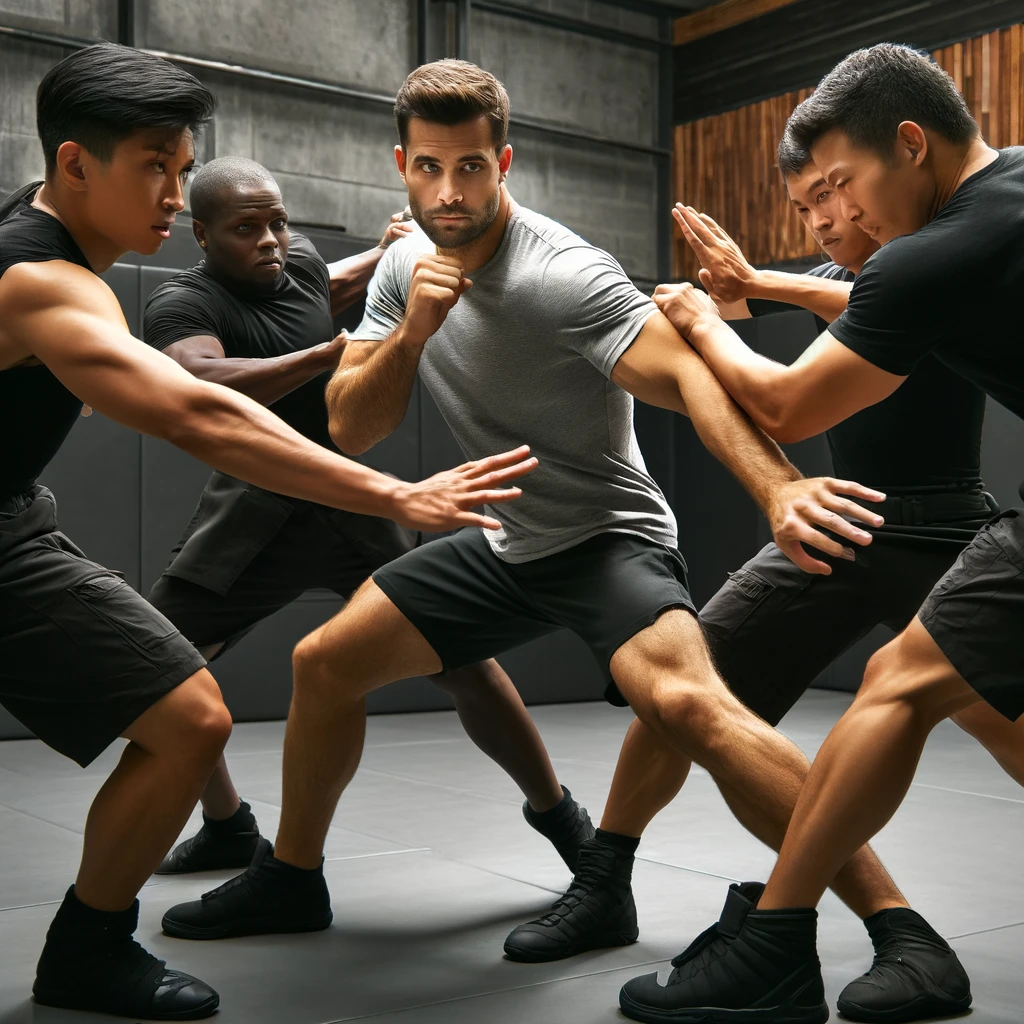
Pros and Cons
The Advantages of Krav Maga
Krav Maga offers straightforward, effective self-defense techniques that can be employed against armed and unarmed attackers, making it highly practical for personal security.
- Quick Learning Curve: The system is designed for fast proficiency, ideally suited for people who want to learn self-defense quickly.
- Adaptability: Techniques are adaptable in various situations, whether in close quarters, against multiple attackers, or facing armed assailants.
The Advantages of MMA
MMA provides a comprehensive fighting skill set that enhances physical conditioning, tactical thinking, and personal discipline.
- Versatility: A mix of striking, grappling, and submissions makes MMA fighters versatile and prepared for any fighting situation within the context of a sport.
- Physical and Mental Discipline: Regular training promotes a high degree of physical fitness and mental toughness, preparing athletes for competitive challenges.
The Drawbacks of Krav Maga
While effective for self-defense, Krav Maga has aspects that may be seen as disadvantages.
- Limited Sporting Application: The techniques are not designed for sport, thus limiting participants in terms of competitive fighting.
- Aggressiveness: The aggressive nature of the techniques can be seen as excessively violent, especially in non-threatening situations.
The Drawbacks of MMA
Despite its popularity, MMA has drawbacks particularly when considered for self-defense.
- Rules and Regulations: The rules governing MMA can be restrictive; techniques effective on the street are often prohibited in competition.
- Injury Risk: The intense nature of the sport carries a high risk of injury, from minor to career-ending, which can deter new participants.
The distinction between Krav Maga’s scenario-based training for real-life threats and MMA’s sport-oriented approach highlights their respective applications—self-defense vs. competition.
This section provides an overview of their tactical differences, legal issues, and ethical considerations, helping readers understand which martial art might be more suitable for their personal goals and circumstances.
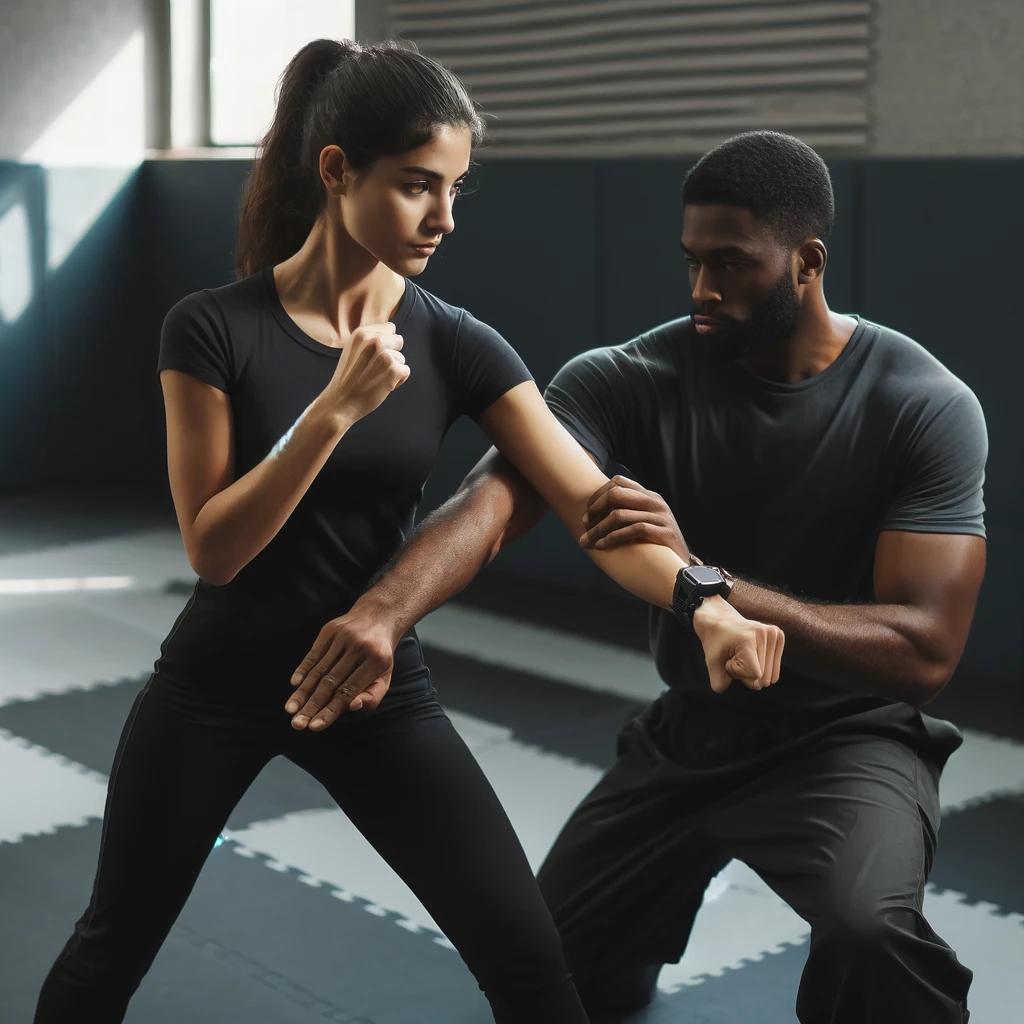
Who Should Choose What?
Best Fit for Krav Maga
Krav Maga is best suited for individuals who are interested in learning self-defense to protect themselves and their loved ones in real-world scenarios. It is particularly effective for those who want to develop the ability to react swiftly and effectively under stress.
- Ideal for Self-Defense: It teaches practical and efficient techniques for warding off an attacker, making it suitable for all, regardless of strength or size.
- Quick to Learn: The system focuses on natural movements and instinctive reactions, which can be learned relatively quickly and require minimal maintenance.
- High Stress Adaptability: Perfect for those looking to handle high-pressure situations effectively, whether in urban environments or isolated settings.
Best Fit for MMA
Mixed Martial Arts (MMA) appeals to those who are interested in a comprehensive combat sport that involves both striking and grappling. It is ideal for individuals looking for a challenging sport that tests limits both physically and mentally.
- Sport and Fitness Enthusiasts: If you’re looking to compete and stay in top physical form, MMA offers a rigorous fitness regimen and competitive opportunities.
- Long-Term Commitment: It requires a significant time investment to master various fighting techniques, making it suitable for those who can dedicate the time to extensive training.
- Versatile Martial Arts Training: For those interested in learning a mix of martial arts, MMA provides exposure to techniques from sports like boxing, Brazilian Jiu-Jitsu, wrestling, and more.

Learning Curve and Progression
Initial Challenges in Krav Maga
Starting Krav Maga can be daunting due to its intense and aggressive techniques aimed at real-life situations, which can be physically and mentally challenging for beginners.
- Overcoming Fear: New practitioners often need to overcome the initial fear of aggressive confrontations.
- Physical Intensity: The high intensity of training can be a hurdle, but it is essential for preparing the body to handle real-life stress and threats.
- Situational Awareness: Developing awareness of one’s surroundings is a critical skill that takes time to hone.
Initial Challenges in MMA
MMA training can be intimidating for beginners due to its complexity and the physical demands of the sport.
- Technical Proficiency: Newcomers must learn various techniques from different martial arts, which can be overwhelming.
- Physical Conditioning: The sport demands excellent physical condition, requiring consistent and rigorous training.
- Rules and Regulations: Understanding the rules that govern competitive fights is essential and can take time to master.
Mastery and Advancement
Advancing in Krav Maga and MMA involves not only physical training but also mental and strategic development.
- Advancing in Krav Maga: Progression is usually rapid, with practitioners able to handle basic confrontations within a few months. Mastery involves refining techniques and improving instinctual reactions.
- Advancing in MMA: MMA fighters may spend years honing their skills across various disciplines. Advancement involves climbing through amateur ranks before entering professional levels, which requires dedication and perseverance.
Both Krav Maga and MMA offer unique sets of challenges and rewards. They cater to different personal goals such as self-defense preparedness and competitive fighting.
This section outlines who might benefit from each martial art and what newcomers can expect when starting their training journeys, providing guidance for potential practitioners to make the best choice according to their interests and needs.

Cultural Impact and Popularity
Media Representation of Krav Maga
Krav Maga has been popularized in various forms of media, which has contributed significantly to its global recognition as a formidable self-defense system.
- Film and Television: Frequently featured in action movies and TV shows, Krav Maga is often portrayed as the ultimate survival skill, enhancing its appeal to those interested in personal security and effective, no-nonsense combat.
- Video Games: Various video games have incorporated Krav Maga techniques into character skill sets, emphasizing the system’s efficiency and brutal effectiveness.
- Literature and Online Content: Numerous books, articles, and online tutorials have been published, providing easy access to learning materials and further boosting its popularity.
Media Representation of MMA
Mixed Martial Arts (MMA) has seen a meteoric rise in popularity, largely thanks to media exposure and the proliferation of organizations like the UFC (Ultimate Fighting Championship).
- Sports Broadcasting: MMA competitions are regularly broadcasted worldwide, attracting millions of viewers and making household names of top fighters, which helps to grow the sport at a grassroots level.
- Reality Television: Shows like The Ultimate Fighter provide viewers with an inside look at the training regimens of MMA fighters, which has helped demystify the sport and demonstrate the dedication MMA requires.
- Mainstream Sports Coverage: As MMA has gained legitimacy as a sport, it has received increasing coverage in mainstream sports media, further establishing its presence in the sports industry.
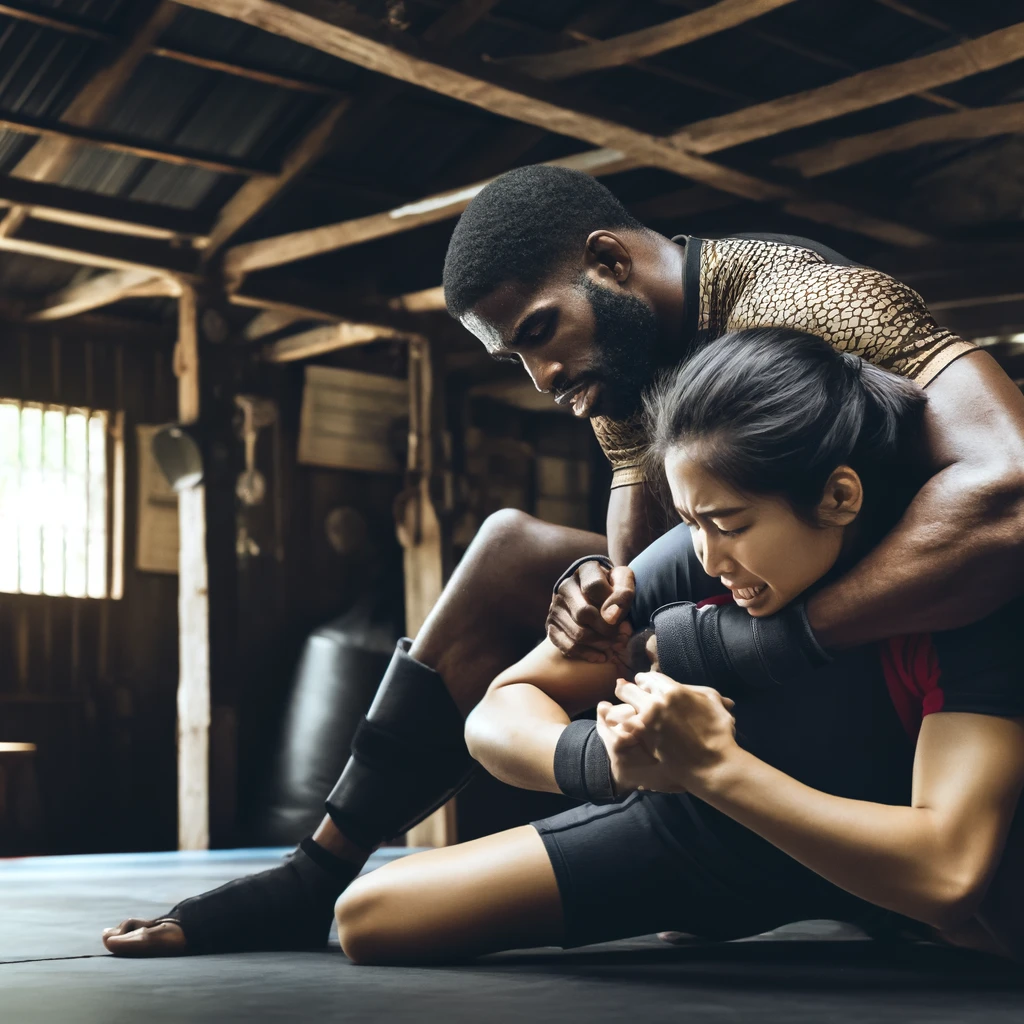
Community and Support Systems
The Krav Maga Community: Brotherhood and Empowerment
The Krav Maga community is characterized by a strong sense of solidarity among practitioners, who often regard their training groups as a second family.
- Global Network: Krav Maga has a vast network of schools and instructors around the world, providing strong community support and widespread training opportunities.
- Seminars and Workshops: Regular events are held globally, allowing practitioners to meet, exchange knowledge, and refine their skills under different instructors.
- Empowerment Through Training: The community places a strong emphasis on empowerment, resilience, and confidence, which appeals to those looking for personal growth and community connection.
The MMA Community: Diversity and Inclusion
The MMA community boasts a diverse and inclusive environment, with practitioners hailing from various backgrounds and disciplines, which enhances the learning and competitive environment.
- Inclusivity in Training: MMA gyms typically foster an inclusive atmosphere where newcomers are welcomed and supported throughout their training journey.
- Competitions and Social Events: Regular local and international competitions provide fighters with opportunities to test their skills and bond with fellow athletes.
- Support Networks: Many MMA organizations provide robust support networks for fighters, including coaching, medical care, and career management, which is crucial for athlete development.
Both Krav Maga and MMA communities play pivotal roles in supporting and expanding their respective sports.
These communities not only foster personal growth and camaraderie but also contribute to the sports’ cultural impact and popularity by creating inclusive, supportive, and empowering environments.
Each community reflects the values and principles of its martial art, providing a solid foundation for both beginners and advanced practitioners to grow and excel.
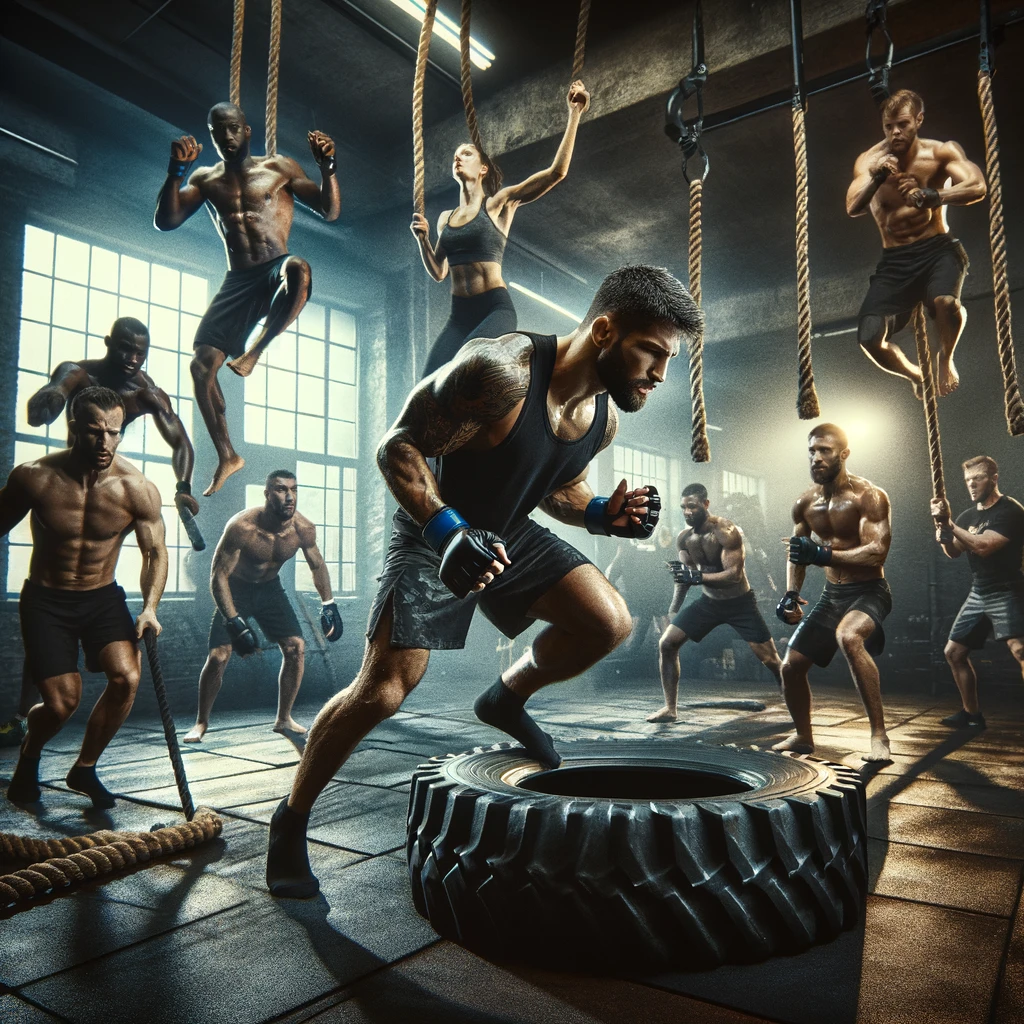
Cross-Training: Complementary or Contradictory?
Integrating Krav Maga Techniques into MMA Training
Krav Maga offers unique advantages when integrated into MMA training, enhancing a fighter’s self-defense capabilities and situational awareness.
- Enhanced Self-Defense Skills: Krav Maga’s focus on real-world situations helps MMA fighters develop better defensive reactions, particularly against attacks that are not common in the sporting context.
- Improved Situational Awareness: The situational training of Krav Maga teaches fighters to be aware of their surroundings, a valuable skill both inside and outside the cage.
- Aggressiveness and Efficiency: Incorporating Krav Maga’s aggressive techniques can give MMA fighters an edge in striking and neutralizing opponents quickly and effectively.
Integrating MMA Techniques into Krav Maga Training
Conversely, incorporating MMA techniques into Krav Maga training can significantly benefit practitioners by broadening their combat skills and enhancing their physical conditioning.
- Expanded Combat Skills: MMA’s diverse skill set including grappling, ground control, and submission holds can provide Krav Maga practitioners with additional tools to handle an attacker.
- Physical Conditioning: The rigorous physical training required in MMA helps improve overall fitness, strength, and endurance, which are beneficial in any physical confrontation.
- Sporting Element to Training: By adopting MMA’s competitive elements, Krav Maga practitioners can enjoy a new dimension of sparring that tests their skills under safe, controlled conditions.
Potential Conflicts in Cross-Training
While cross-training has many benefits, it also presents some challenges and potential conflicts between the two disciplines.
- Technique Conflicts: Some techniques and principles of Krav Maga and MMA might contradict, such as Krav Maga’s instinctive, aggressive responses which are not always legal or practical in MMA’s sporting context.
- Training Focus: Balancing the self-defense focus of Krav Maga with the competitive focus of MMA can be challenging for practitioners who may need to unlearn habits from one to succeed in the other.
- Rule Variations: The rules governing MMA competition can restrict the use of certain aggressive Krav Maga techniques, which could limit the effectiveness of cross-training for sport-oriented fighters.
Cross-training between Krav Maga and MMA can provide a comprehensive approach to personal defense and combat sports by combining the strengths of both disciplines.
However, practitioners must navigate the challenges carefully to maximize the benefits and minimize the conflicts that arise from integrating these distinct martial arts practices.
This balanced approach can lead to a more versatile and capable martial artist, prepared for both self-defense scenarios and competitive fighting.
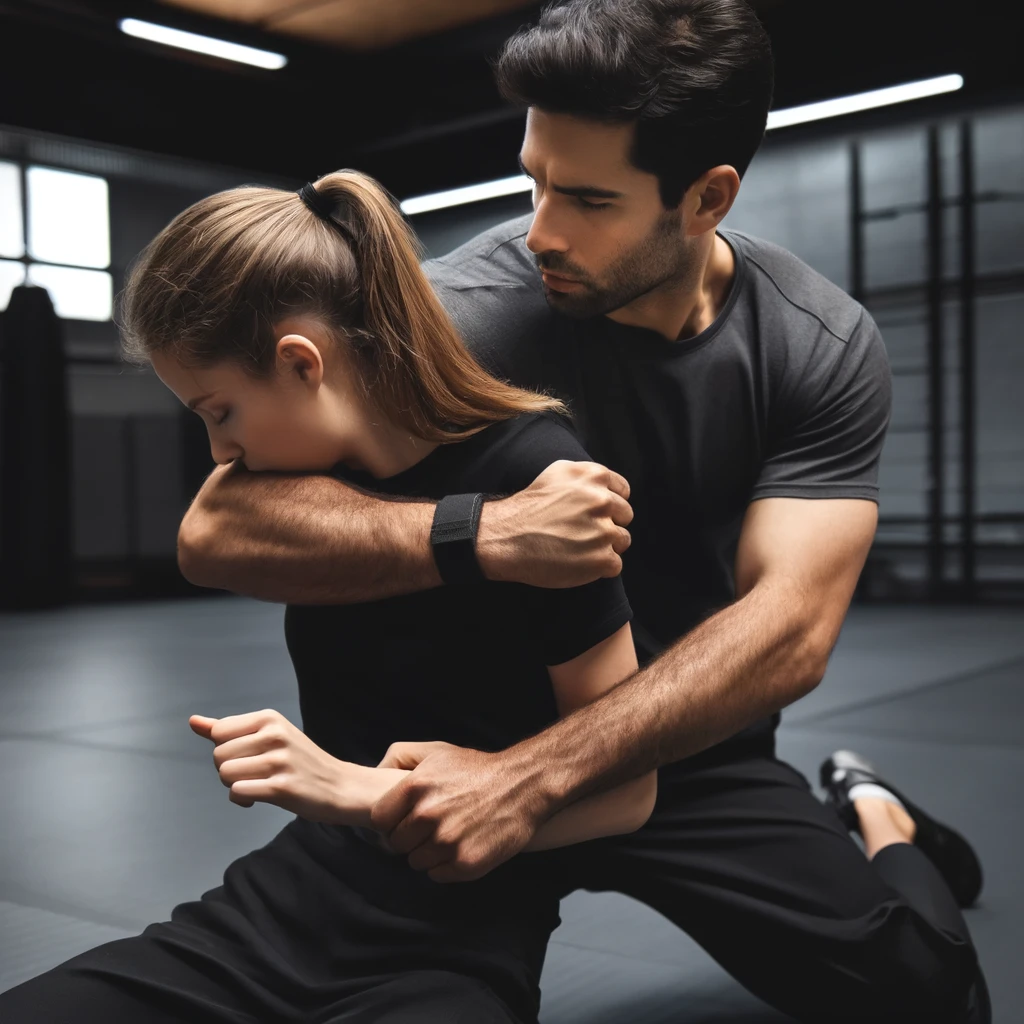
Conclusion
Thanks for checking out this article on Krav Maga vs MMA. We’ve explored the intricacies and unique aspects of each combat system to help you determine which might be the best fit for your personal and professional needs.
Whether you’re drawn to the real-world, self-defense orientation of Krav Maga or the competitive, disciplined environment of MMA, both styles offer substantial benefits and can significantly enhance not only your physical capabilities but also your mental toughness.
As you consider your options, think about what you aim to achieve through your martial arts training. Krav Maga is ideal if you’re interested in learning quick, effective self-defense techniques that can keep you safe in real-life situations.
On the other hand, MMA might be the better choice if you’re attracted to the idea of entering competitions and testing your skills against others in a regulated and sportive environment.
Whatever path you choose, both Krav Maga and MMA provide robust training frameworks that build more than just physical strength—they forge resilience, quick thinking, and adaptability, traits that are invaluable in any walk of life.
Dive into the community, learn from the experiences of others, and above all, embrace the journey of becoming a more skilled and confident martial artist.

FAQ Section
What is Krav Maga and how is it used for self-defense?
Krav Maga, developed by Imi Lichtenfeld for the Israel Defense Forces, is a combat system that combines practical techniques focused on real-world effectiveness and speed. It emphasizes instinctive movements, muscle memory, and aggression to disable an aggressor quickly.
Techniques include groin strikes, eye gouging, and other moves that are vital in a real fight, making it highly effective for self-defense in any scenario, especially against an armed opponent.
Can Krav Maga be used in MMA?
Yes, Krav Maga can be incorporated into MMA; however, it is important to note that certain Krav Maga techniques such as eye gouges and throat strikes are prohibited in a regulated MMA fight.
Trained fighters can adapt Krav Maga’s explosiveness and situational awareness to the diverse combative environment of MMA, enhancing their close-quarter combat capabilities.
Is Krav Maga effective in a street fight?
Krav Maga is specifically designed for street fights where rules do not apply. Its techniques are devised to end fights quickly by targeting the most vulnerable parts of an aggressor’s body.
Practitioners are prepared to handle real-life violence where defensive tactics need to be straightforward and effective, making Krav Maga one of the most efficient self-defense systems for real-world applications.
Can kickboxing beat Krav Maga?
Kickboxing and Krav Maga both have unique strengths. Kickboxing, which includes elements of boxing and Muay Thai, is excellent for developing striking power and physical conditioning.
However, Krav Maga’s approach to self-defense covers a broader range of techniques such as dealing with armed attackers and multiple aggressors, which might provide a better fit for self-defense situations than kickboxing’s sport-oriented style.
Can I combine boxing and Krav Maga?
Combining boxing with Krav Maga is a great way to enhance your self-defense capabilities. Boxing will improve your punching technique, reflexes, and footwork, all of which are beneficial in a street fight scenario.
Integrating these skills with Krav Maga’s defensive maneuvers and mindset for dealing with armed and multiple attackers can create a comprehensive defense strategy.
How does Krav Maga compare with traditional martial arts like Kung Fu and Aikido?
Krav Maga is generally more focused on practical techniques for immediate threat neutralization, which contrasts with the more discipline-oriented and stylistic approaches of Kung Fu and Aikido.
While Kung Fu and Aikido emphasize form, flow, and the philosophical aspects of martial arts, Krav Maga teaches practitioners to respond with speed and decisiveness, which can be crucial in a real-life confrontation.
What are the physical benefits of training in Krav Maga?
Krav Maga improves physical conditioning, agility, and strength. It develops explosiveness and endurance, with a strong emphasis on cardiovascular fitness.
Practicing Krav Maga builds not just the body but also enhances mental fortitude through rigorous drills that prepare individuals for high-stress situations typical in real-world violence.
Is Krav Maga better than Brazilian Jiu-Jitsu (BJJ) for self-defense?
Krav Maga and Brazilian Jiu-Jitsu (BJJ) both offer effective self-defense strategies but focus on different aspects. BJJ excels in ground fighting and submission, which can be invaluable in a one-on-one fight.
However, Krav Maga addresses a wider range of situations, including those involving multiple attackers and armed opponents, making it potentially more adaptable for unpredictable real-life violent situations.
Can watching Krav Maga on YouTube help me learn the techniques?
Watching Krav Maga tutorials on YouTube can provide insights and augment your understanding of various techniques, but it is not a substitute for attending Krav Maga classes where you can receive hands-on training under the supervision of experienced instructors.
Real-life classes offer the benefit of live feedback and corrections that are crucial for developing effective self-defense skills.
Which is more practical for women: Krav Maga or Kickboxing?
Krav Maga is often considered more practical for women due to its focus on neutralizing threats quickly and efficiently, crucial for self-defense scenarios typically involving a larger, stronger aggressor.
Kickboxing provides strong athletic foundations and striking skills, which are beneficial; however, for practical, real-life self-defense, Krav Maga’s comprehensive approach to personal protection is generally preferred.
These FAQs aim to clear up common queries related to Krav Maga and its comparison with other martial arts and training methods, providing a better understanding of its practical applications in both everyday life and mixed martial arts contexts.
Whether for fitness, self-defense, or as a complement to other combat sports, Krav Maga offers valuable skills and methodologies for dealing with real-world threats.







